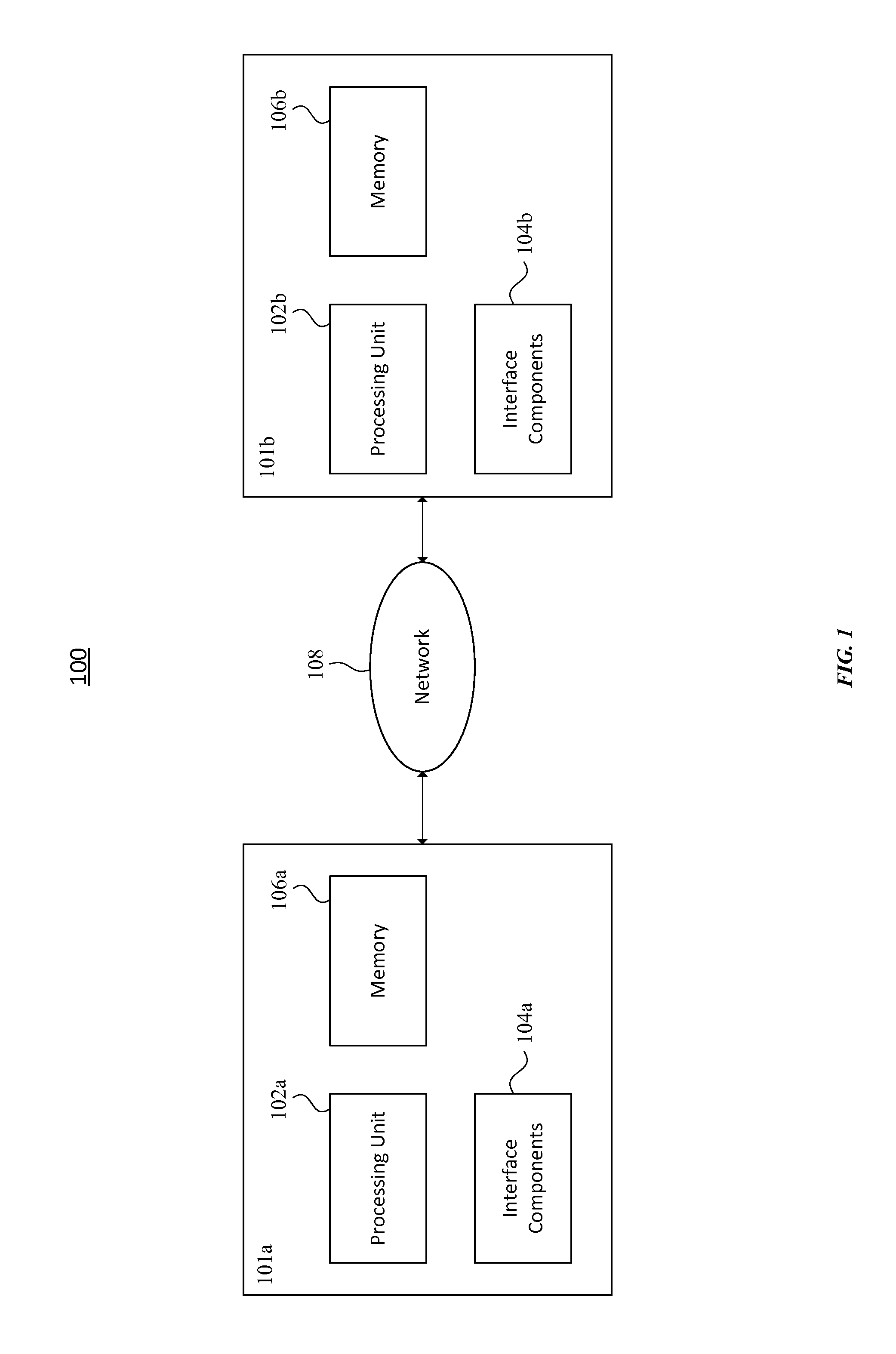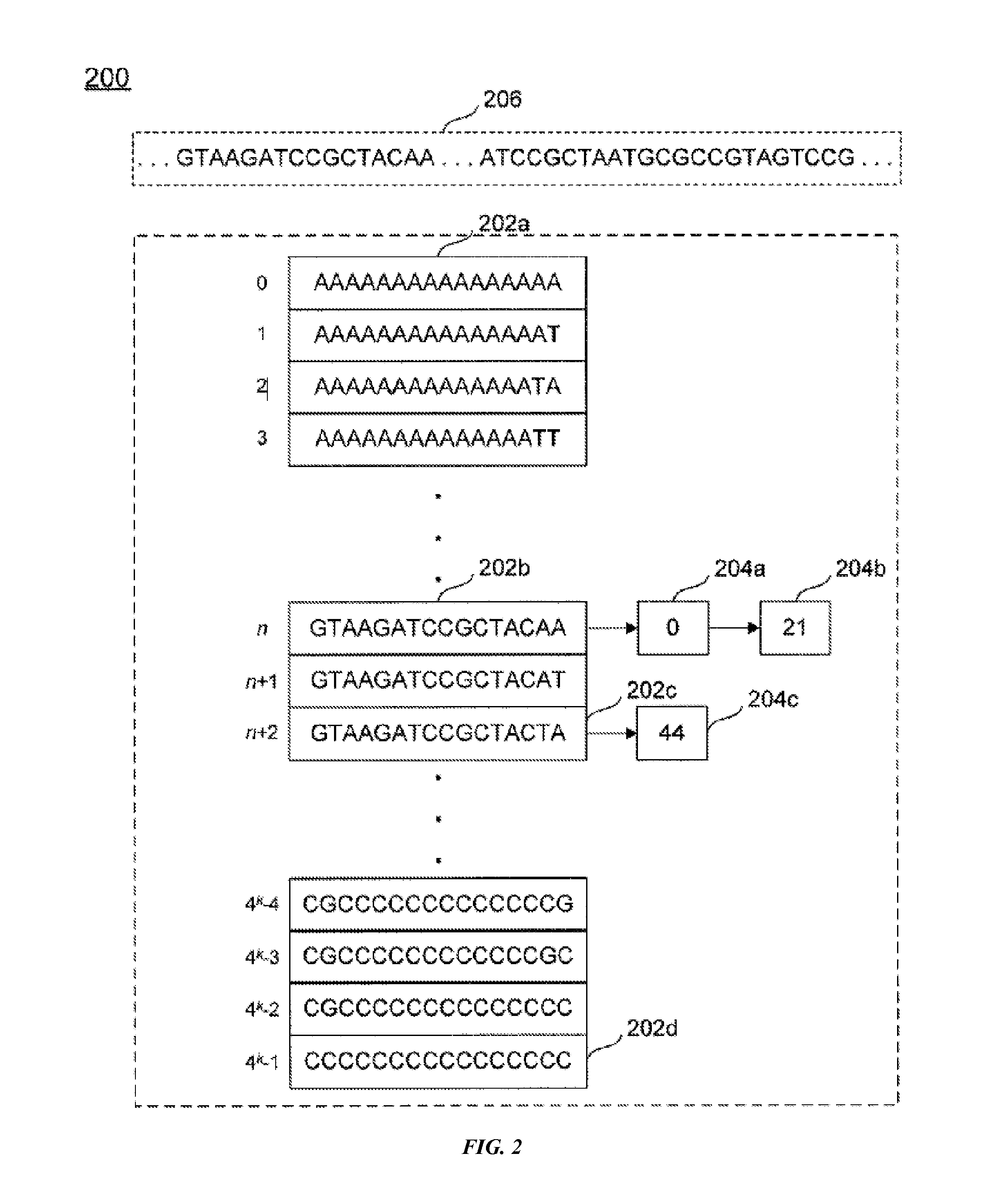Compression and transmission of genomic information
a genomic information and compression technology, applied in the field of genomic information compression and transmission, can solve the problems of large amount of processing power and network bandwidth, cumbersome current methods, and large amount of data to be transmitted and/or transported, and achieve the effect of efficient compression, transmission and decompression of genomic information
- Summary
- Abstract
- Description
- Claims
- Application Information
AI Technical Summary
Benefits of technology
Problems solved by technology
Method used
Image
Examples
example 1
[0098]In a future embodiment, the following structure is used to form part of a compressed representation of a nucleic acid sequence. The following data structures are used with two identical instances of an index that each contain every possible permutation of 16-base elements comprised of nucleotides A, T, C, and G. Each index will contain 4k 128-bit elements, each element associated with an 8-bit reference number 0 through 4k-1.
[0099]The following structure represents a compressed data structure for representing a sequence portion for which the elements in the first and second index are capable of expressing an exact match. That is, when the elements in the indexes can be used to assemble an exact representation of the portion, the following compressed data structure is used.
typedef struct CompressedReads{uint16_t referenceId;uint32_t referenceLoc;uint16_t readLen;} CompressedRead;
[0100]In this structure, “referenceId” represents a reference to an element in an index, the element...
example 2
[0110]In a future embodiment, the genome of E. coli is represented by input data that is approximately 5 GB in size. Using the compression methodology described above with indexes having 4k 128-bit elements, each element associated with an 8-bit reference number 0 through 4k-1, the E. coli genome is compressed to 357.14 MB in size, and is transmitted via a computer network from one computer to another for decompression. This compression is a compression to approximately 7% of the original size of the input data.
PUM
 Login to View More
Login to View More Abstract
Description
Claims
Application Information
 Login to View More
Login to View More - R&D
- Intellectual Property
- Life Sciences
- Materials
- Tech Scout
- Unparalleled Data Quality
- Higher Quality Content
- 60% Fewer Hallucinations
Browse by: Latest US Patents, China's latest patents, Technical Efficacy Thesaurus, Application Domain, Technology Topic, Popular Technical Reports.
© 2025 PatSnap. All rights reserved.Legal|Privacy policy|Modern Slavery Act Transparency Statement|Sitemap|About US| Contact US: help@patsnap.com



